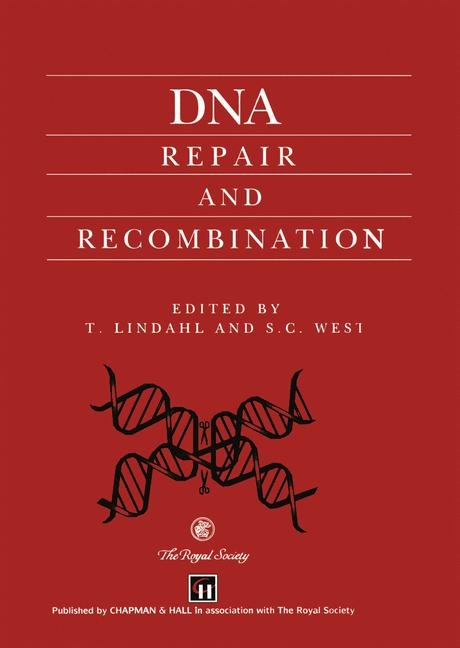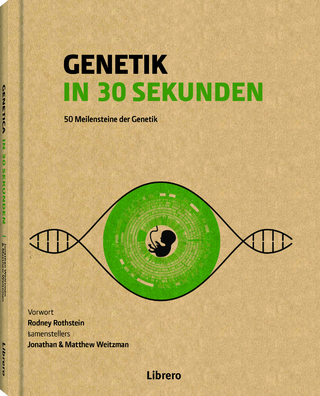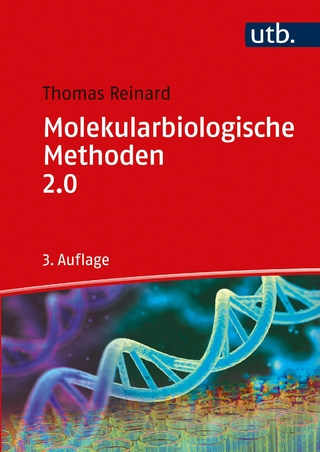
DNA Repair and Recombination
Chapman and Hall (Verlag)
978-0-412-64040-7 (ISBN)
Genomic instability is a major threat to living organisms. To counteract the damaging effects posed by endogenous and environmental agents, such as chemicals or radiation, micro-organisms devote several percent of their genome to encode proteins that function in the repair and recombination of DNA. For many years, a relatively small group of scientists have carefully delineated the molecular mechanisms of these repair processes, using the simplest model systems available, namely Escherichia coli and Saccharomyces cerevisiae. These studies, which until recently had only moderate impact outside of the field, now provide the cornerstone for exciting new research into analogous processes in human cells. The reason for this is the revelation that the biochemical pathways for the accurate replication, repair and recombination of DNA have been conserved through evolution. New research shows that human cells use DNA repair mechanisms that are analogous to those found in bacteria to overcome the damaging effects of environmental mutagens and carcinogens. Of particular significance is the observation that certain cancers are caused by defects in DNA repair enzymes.
For example, the human inherited non-polyposis colon cancer is now known to be caused by defects in the enzymes that repair DNA mismatches. Because much detailed information has been accumulated in studies of analogous mismatch repair proteins from bacteria, rapid progress can now be made. Without these model systems, progress would be dependent upon the usual time-consuming and laborious attempts to carry out positional cloning of human disease genes, followed by often painstaking efforts to identify the function of each gene product. The structural and functional homologies between the E. coli MutS and MutL proteins, and the S. cerevisiae and human MSH2 and MLH1 proteins, now guide research into understanding the basis of this form of colon cancer. In the realm of model systems, few have been studied in more detail than the mechanism of recombination catalysed by the E. coli RecA protein. This protein, which is responsible for the pairing of homologous chromosomes during recombination and the post-replicational repair of DNA damages, has a counterpart in yeast and man (Rad51), again emphasizing the evolutionary conservation of important biological processes.
The same can be said of the primary mechanism by which human cells are resistant towards the mutagenic effects of ultraviolet light since the mechanism of nucleotide excision repair, carried out in bacteria by the UvrABC proteins, has been conserved in yeast and human cells. Again, defects in this DNA repair system exhibit themselves in man as a predisposition to cancer, i.e. the human inherited disease xeroderma pigmentosum. Most likely, there are additional lessons to be learnt by extending model systems to man. For example, when exposed to a hostile environment, bacteria attempt to defend themselves by induction of an error-prone DNA repair system; over twenty years ago, Brenner and Milstein proposed that a similar mechanism of local error-prone DNA repair synthesis might be employed by higher cells as a hypermutation mechanism to generate antibody diversity. This intriguing hypothesis is now open to experimental test. However, it is obvious that higher eukaryotes also have unique organizational problems that do not occur in bacteria.
The presence of a large amount of repeated DNA sequences in higher cells poses problems in avoiding the loss or gain of DNA sequences, resulting from slippage of the template during replication and recombination. It is difficult to imagine the consequences of the high level of spontaneous recombination characteristic of S. cerevisiae if it occurred in human cells (actually, it is not difficult to imagine, but the thought of it sends a shiver down our DNA backbones!). The aim of this Discussion meeting was to provide a current authoritative account of a rapidly developing field. We thank our distinguished colleagues who contributed to this volume for making this possible.
RecA protein mediates homologous recognition via non-Watson-Crick bonds in base triplets, B.J. Rao and C.M. Radding; the initiation and control of homologous recombination in escherichia coli, Gerald R. Smith et al; formation, translocation and resolution of holliday junctions during homologous genetic recombination, Stephen C. West; structure of the four-way DNA junction and its interaction with proteins, Derek R. Duckett et al; site-specific recombination and circular chromosome segregation, David J. Sherratt et al; steps along the pathway of V(D)J recombination, Martin Gellert and J. Fraser McBlane; regulation and mechanisms of gene amplification, Kathleen A. Smith et al; enzymes acting at strand interruptions in DNA, Tomas Lindahl et al; nucleotide excision repair in the yeast saccharomyces cerevisiae - its relationship to specialized mitotic recombination and RNA polymerase II basal transcription, Errol C. Friedberg et al; proteins that participate in nucleotide excision repair of DNA in mammalian cells, Richard D. Wood; nucleotide excision repair syndromes - molecular basis and clinical symptoms, Dirk Bootsma et al; on the regulation of the p53 tumour suppressor, and its role in the cellular response to DNA damage, David P. Lane et al; mismatch repair, genetic stability and tumour avoidance, Paul Modrich; editing DNA replication and recombination by mismatch repair - from bacterial genetics to mechanisms of predisposition to cancer in humans, M. Radman et al.
| Zusatzinfo | 48 line illustrations,17 halftone illustrations |
|---|---|
| Verlagsort | London |
| Sprache | englisch |
| Maße | 210 x 297 mm |
| Gewicht | 620 g |
| Einbandart | gebunden |
| Themenwelt | Medizin / Pharmazie ► Medizinische Fachgebiete |
| Medizin / Pharmazie ► Studium | |
| Naturwissenschaften ► Biologie ► Genetik / Molekularbiologie | |
| Naturwissenschaften ► Biologie ► Zellbiologie | |
| ISBN-10 | 0-412-64040-6 / 0412640406 |
| ISBN-13 | 978-0-412-64040-7 / 9780412640407 |
| Zustand | Neuware |
| Haben Sie eine Frage zum Produkt? |
aus dem Bereich


